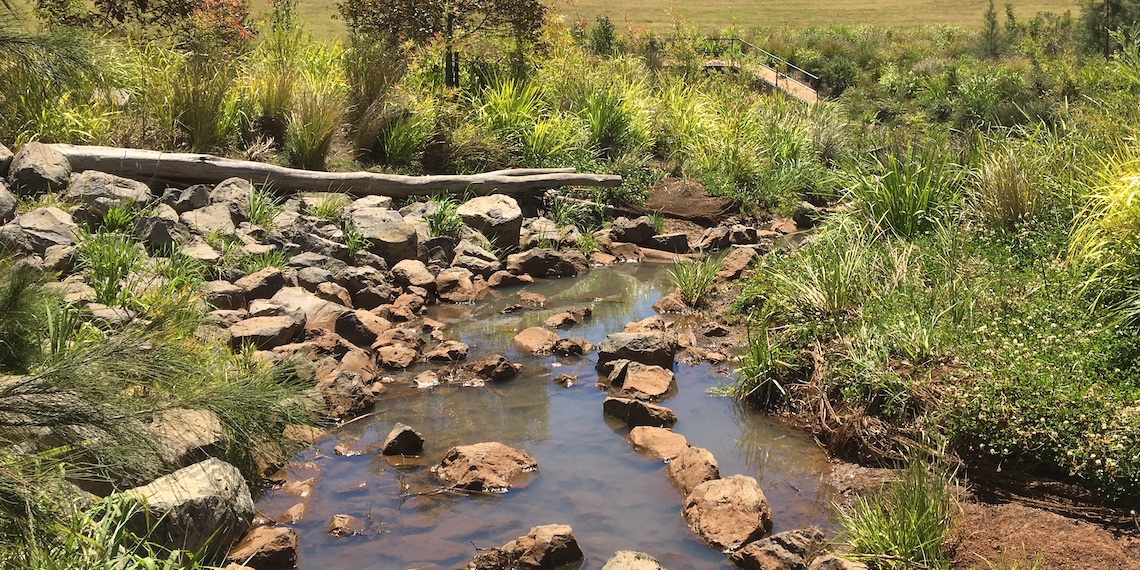Nature-based solutions key to achieving low-carbon economy

As sectors across the world chase net zero and attempt to adapt to climate change, one leading consultancy is leaning into the low-carbon economy with the launch of a nature-based solutions team in Australia and New Zealand.
Earlier this year, AECOM announced the establishment of the new team, which is set to focus on delivering innovative nature-based solutions to address the impacts of climate change, biodiversity loss and emissions reduction.
AECOM Australia and New Zealand Chief Executive Richard Barrett said the company is proud to take another step towards delivering on the commitment made in its Sustainable Legacies strategy: to create a lasting positive impact on communities and the planet.
“Nature-based solutions will be integral to transitioning to a low-carbon economy and adapting our communities and infrastructure to our changing climate,” he said.
“We acknowledge the intrinsic relationship between the built environment and natural systems and look forward to bringing our specialists together with First Nations expertise to help safeguard our future.”
The nature-based solutions team will bring together more than 200 local AECOM specialists in climate resilience, ecology, hydrology, natural capital accounting and digital solutions, and its extensive experience in water-sensitive urban design and landscape architecture.
AECOM ANZ Nature-Based Solutions Lead Cathy Crawley said it is now more important than ever to take a cross-disciplinary and collaborative focus.
“We are a multidisciplinary organisation and this new team feeds into that very specifically,” she said.
“The relationship between nature, water and climate, and also how we engineer solutions, requires us to be integrated and think collaboratively across our business. That is fundamentally at the core of delivering this important work.”
Shifting market
There have been a number of drivers to support AECOM’s shift towards nature-based solutions offerings, Crawley said, including a shift in market demand and the intensifying concerns for environmental degradation globally.
“First and foremost, our clients are increasingly asking us to think differently about how we design, but also about how we value the natural environment. And addressing our client’s needs is very important to us,” she said.
“More broadly, there has been a real shift in local and global awareness around issues of biodiversity, which is linked to the climate crisis, as well. And the importance of restoring and re-establishing biodiversity is feeding into our clients' need to reconsider practice.”
Crawley said the changing policy direction of the Australian Government has also played a role, as well as the 2022 State of the Environment Report, which established the dire situation the natural environment is in.
“These things really triggered our thinking about what nature positive means. We are doing work for clients now around how they think about the natural environment from an opportunities and risk disclosures perspective in corporate strategies and sustainability reporting, and through frameworks such as the Task Force for Nature Based Financial Disclosures [or TNFD]” she said.
New approach
AECOM ANZ Water Resources Sector Leader Martin Boshoff said the launch of AECOM’s Sustainable Legacies Strategy in 2021 marked a significant turn in AECOM’s approach, which began to focus much more closely on moving towards low-carbon solutions, but also in pursuit of environmental co-benefits.
“Our strategy was really the catalyst for change and it is where the market is going,” he said.
“We see nature-based solutions as a key component of embedding sustainability, climate resilience, and decarbonisation into all of our projects – that’s what we see as the biggest contribution we can make in moving towards a net-zero future.”
Boshoff said there are many opportunities to do more to embed sustainability into major projects, but these require taking a different approach to problem solving and solutions building.
“We are trying to equip our engineers and scientists to think about solutions beyond traditional engineering and hard-gray infrastructure, and really think about how we can work in harmony with the water environment,” he said.
“And every one of our projects has a water aspect to consider. Water is integral to all of our projects, whether its supply, flooding or stormwater, protecting or mitigating. The water sector is about more than utilities; it’s about water for sustainable growth in all areas.”
Despite water being integral to all projects, Boshoff said the integrated nature-based solutions team makes particular sense within the context of water management.
“In the water sector we have already been using nature-based solutions to help manage our water resources, reduce the risk of floods and drought, and improve water quality. Nature has been here doing these things for us forever,” he said.
“There is such a strong link between nature-based solutions, water management and biodiversity. So we look at those natural solutions and think about how we can solve real engineering challenges by using biomimicry because it already works perfectly.”
Valuing nature
Crawley said the link between biodiversity and business value is now becoming very important, and it’s time to start valuing the services provided by nature appropriately.
“Because of all the ecosystem services that nature provides, loss of biodiversity can pose a risk to business. It can pose a risk to our future GDP globally. And there is an opportunity for businesses to think about this now in a more positive way,” she said.
“When we value a natural solution versus a gray infrastructure solution, we need to add the broader ecosystem services value that the nature-based solution offers.
“Sometimes the value added by utilising nature-based solutions vastly outweighs a traditional engineering approach. And all of these environmental benefits can also be measured monetarily. That’s the next step for our industry.
“We need to be thinking more broadly about the cost-benefit process, and add in the values provided by the ecosystem services that a nature-based approach would bring.”
Rather than thinking of the natural environment as a risk, water companies need to think about the opportunities available in their assets from a natural market perspective, Crawley said.
“Improving biodiversity on land holding to act towards offsets – that’s one good opportunity available to all water utilities,” she said.
Boshoff said moving towards low-carbon and environmentally beneficial solutions is now mandatory, and that this climate awareness is something early professionals value highly, too, particularly when looking for an employer.
“Green, net-zero solutions aren't just ‘nice to have’ anymore and our next generation of professionals know this. The early professionals we have starting at AECOM are super passionate about making a difference on climate change and are looking for tangible ways to do that,” he said.
“Our staff are excited about this strategy that AECOM is taking. We see the nature-based solutions team as a pathway to really moving the dial within industry.”



